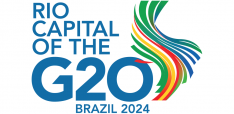PISA for Development

Erik Solheim argues that the new PISA for Development program, launched March 27 2015 in Guatemala, provides an opportunity to improve the quality of education in developing countries.
Extreme poverty has been halved in two decades and the world is now richer, better educated and more peaceful than at any other point in human history. More than 9 out of 10 children and as many girls as boys now go to school. But children do not learn enough at school. And no one should be left behind.
Enrolling all children, keeping them in school and providing a good education is essential for development. The education a country has today is the economy they will have tomorrow. All the great success stories in recent times have put education at the core of development. South Korea went from one of the poorest countries in the world to one of the richest by focusing on education and industrialisation. Young Koreans are now 390 times richer than their grandparents were. Korean 15-year olds perform better in school than any other rich OECD nation. The founder of Singapore, Lee Kuan Yew, who has got applause from an entire world after he passed away, emphasized education his entire life.
Huge strides have been made in securing basic education for all. But children are not learning enough at school. Too many students drop out before high school or university. Shortage of skilled labour is a big problem in many developing countries. The quality of education will be a central aspect of the new United Nations sustainable development goals to be agreed later this year. The OECD has launched PISA for Development as contribution to improve quality of education worldwide. Since 1997, PISA has been the leading reference on the quality of education systems worldwide. The “PISA-shock”, or the understanding that you have a lot to learn from neighbours, has inspired many countries to reconsider policies and improve their education systems. Now time has come to take the success global and work towards better quality education for all.
The OECD has partnered with Zambia, Ecuador, Paraguay, Cambodia, Senegal and Guatemala to identify how PISA can better measure quality of education in developing countries. The PISA test instruments will need to be adjusted to account for bigger differences between the highest and lowest performing students. New methods must be tested to evaluate students that are not attending formal schooling. We hope that these efforts will enable more countries to use PISA to set national learning policies and monitor progress.
Monitoring and evaluation is crucial for improving education. PISA is a powerful tool because it gives countries an honest assessment of whether their students are on the right track. People and politicians in my nation Norway used to think we had the best education system in the world. Then PISA came along and revealed that this was far from the truth. PISA allows countries to benchmark education progress over time to make sure they are on the right track. Brazil has done more than any other PISA participant to improve its education system. Brazil was on the bottom of the ranking when it first participated in 2000. But Brazil used PISA to prioritise policies and do more of what worked. Brazil improved quality of education faster than any other nation over the next 10 years. The Bolsa Familia program providing cash stipend to low-income families in exchange for enrolling children in school also contributed to improved education for the poorest children most likely to be out of school.
PISA opens up opportunities to learn from the best. Chinese and other East Asian students are the best performers in math and science as well as reading. The seven top spots on the PISA ranking are occupied by Asian countries and cities. There must be many things we can learn from Asian success stories whether the secret is aspiring students, good teachers or better public policies. Identifying policies that work and implement these on a global scale is the key for improving quality of education. Good policies are much more important than money. Fifteen year old students in poor Vietnam are doing better than the average in the much richer OECD countries. Only about 6% of performance differences in PISA test are explained by national income. Money is best used to underpin good policies.
Quality education is the way to development and poverty reduction. Monitoring progress, learning from success stories and implementing the best policies is the way to improve quality of education. Let the children learn!
Erik Solheim, Chair of the Development Assistance Committee, OECD, Organisation for Economic Co-operation and Development.
Photo credit: USAID / Foter / Public domain


